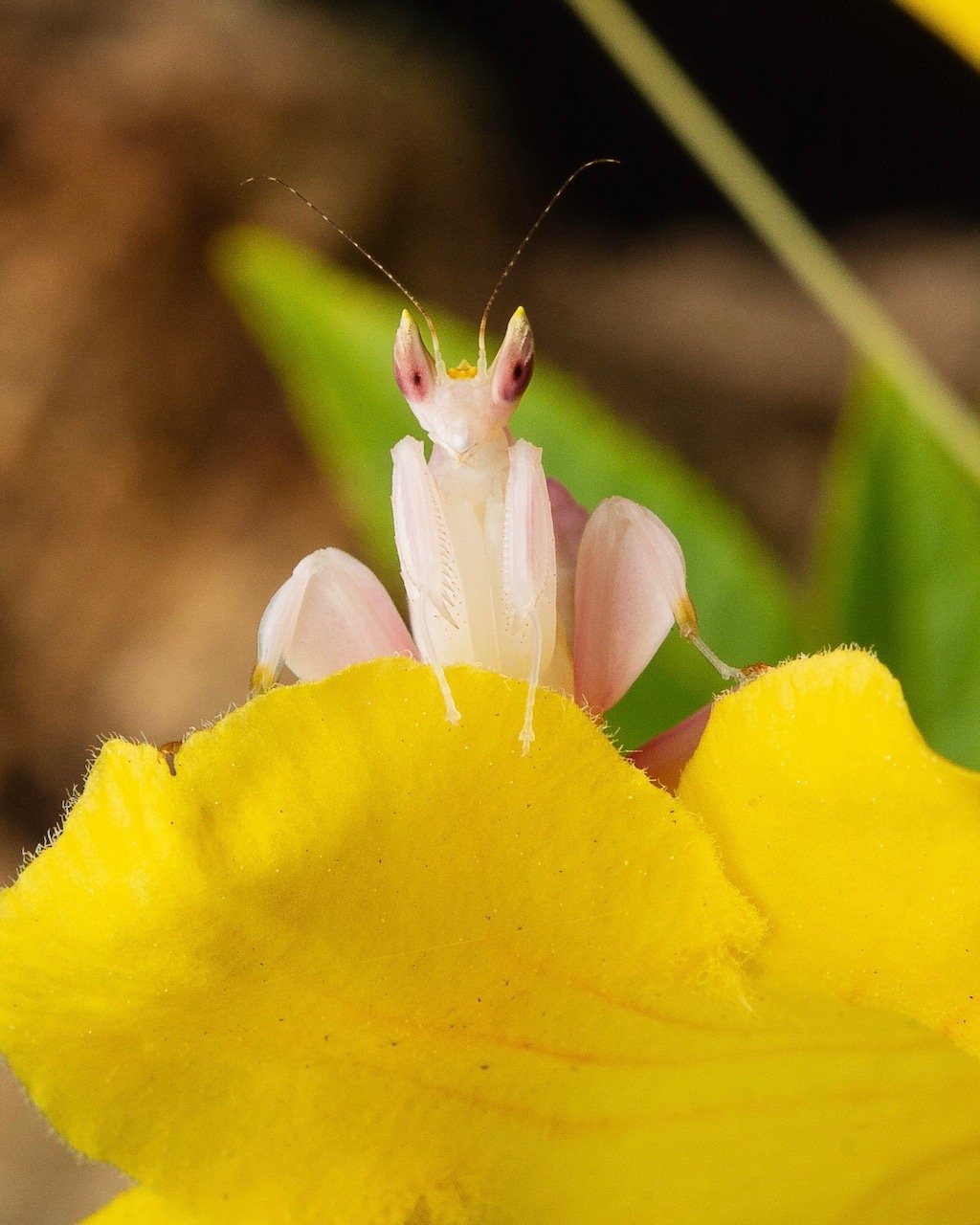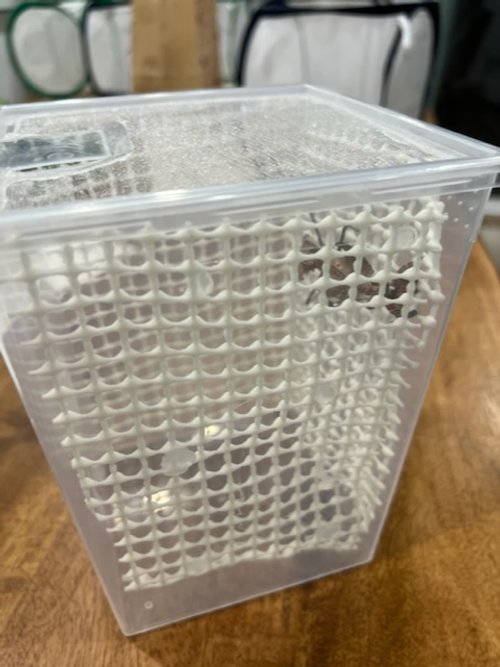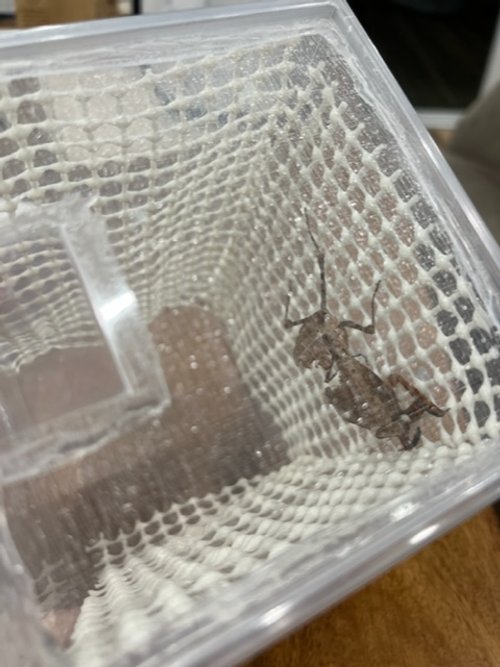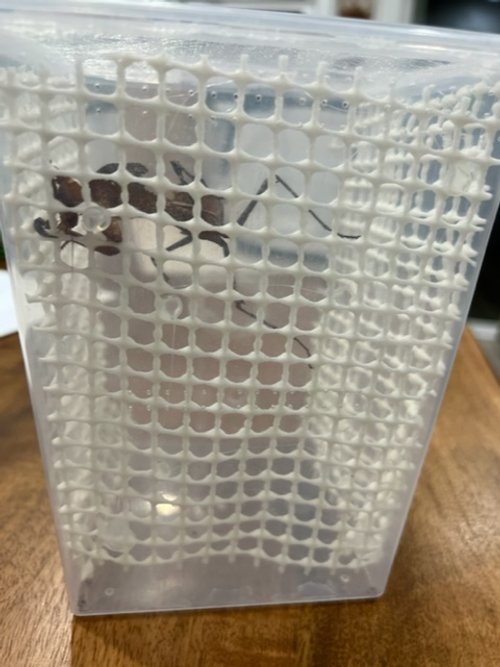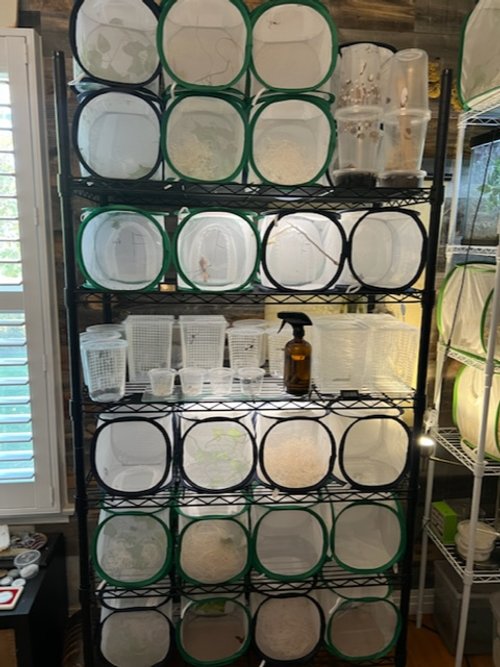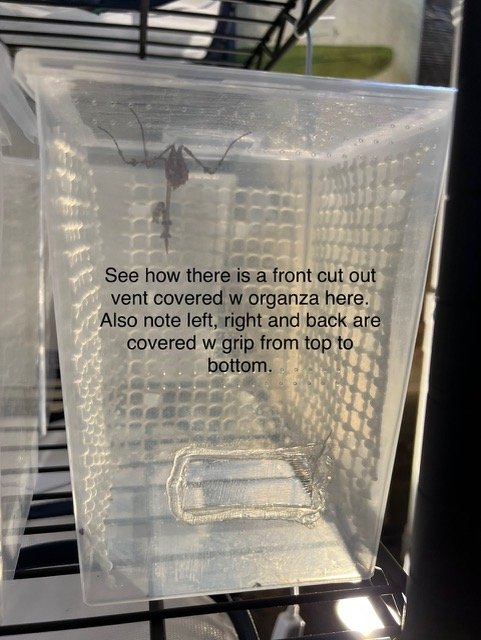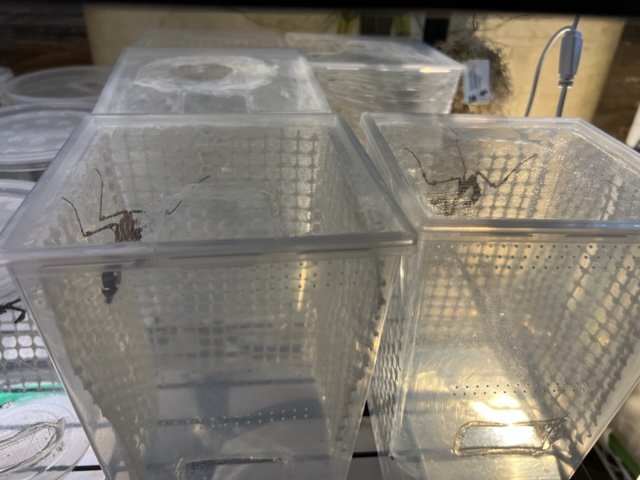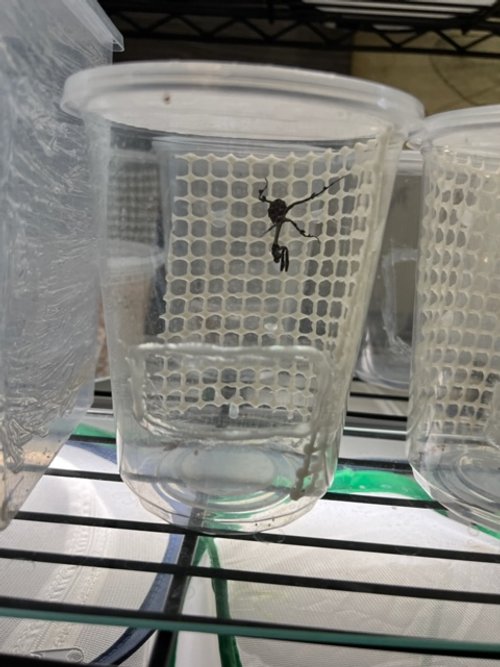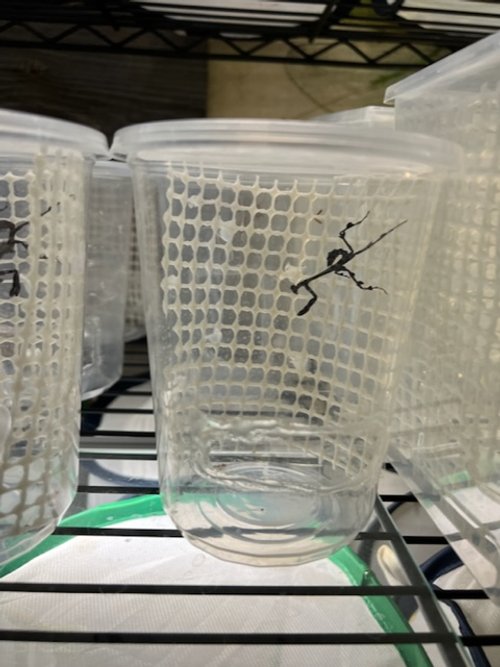The Enchanting Orchid Mantis: Species Information, Care Tips, and Breeding Insights
Introduction
The Orchid Mantis, scientifically known as Hymenopus coronatus, is a remarkable creature renowned for its stunning floral appearance and remarkable camouflage. With its delicate beauty and unique characteristics, the Orchid Mantis has become a highly sought-after species among insect enthusiasts. In this comprehensive blog post, we will explore the Orchid Mantis in detail, providing species information, ideal care guidelines, and insights into breeding. We will also delve into the distinctions between the Malaysian and Indonesian varieties of this captivating mantis.
Species Information
Appearance
The Orchid Mantis showcases an incredible adaptation to mimic orchid flowers. Females display a vivid white or pink coloration, while males typically exhibit a predominantly green hue. Their body shape, petal-like limbs, and fringed antennae further contribute to their uncanny resemblance to orchid blossoms.
Size
Orchid Mantises are considered small to medium sized, with females reaching approximately 2-3 inches (5-7.5 cm) in length, while males tend to be much smaller.
Natural Habitat
Orchid Mantises are native to Southeast Asia, particularly found in countries such as Malaysia, Indonesia, and Thailand. They inhabit tropical forests where orchids and other flowering plants are abundant.
Behavior
These mantises are ambush predators, relying on their floral mimicry to attract unsuspecting prey. They are typically solitary and territorial, preferring to live alone rather than in groups.
Ideal Care for Orchid Mantises
Enclosure
For orchid mantis nymphs, your enclosure can be very simple. As simple as a deli/salsa cup with a fully ventilated top. We like to cut out the inside of the top, leaving only the rim of the lid intact. Then we take organza, tulle or mesh and hot glue it over the cut out. This way the top is fully ventilated and allows for optimal airflow. The fabric cover also gives your orchid mantis an excellent grip to hang upside down from. We also like to take sand paper and scour the inside of the deli cup. This will give your mantis more gripping surface on the inside of the deli cup. One of the biggest benefits of keeping your small orchid mantis nymph in a small deli cup for the first few molts is that they will always be able to find their food. Fruit flies can be hard for an orchid mantis to find in a large enclosure and you risk your orchid nymph not finding its food easily. After your orchid has molted a few times, you can upgrade them to bigger deli cup container and modify the lid again. This time you can create more ventilation by cutting out a small area on the side of the deli cup- and cover again with organza, mesh or tulle and hot glue it down to cover. This way you will have ventilation coming through the top of the container and down through the bottom where the cut out is. You can also move them into a full mesh enclosure like the popular mesh cubes used for butterflies. Of course, you can also create elaborate and creative enclosures too! A Google or Pinterest search will bring up hundreds of ideas. But please remember, you MUST provide adequate ventilation AND gripping surface for your mantis if you use these types of enclosures. If your enclosure is glass or acrylic, be sure to hot glue down some rug gripper on the top, left, right and back sides of the enclosure. Leave the front side open for optimal viewing. By affixing rug gripper to the sides of the enclosure, you are giving your orchid adequate gripping and climbing surface to get to the top of the enclosure. It’s ok to add faux orchids, plants, sticks, etc as decoration, however, these should not be the only way your mantis can get to the top of the enclosure. They must be able to reach the top using the sides only.
Below are examples of this. Note, this is not an orchid mantis in the photos.
Temperature and Humidity
Orchid Mantises thrive in a temperature range of 75-85°F (24-29°C) during the day, with a slight drop at night. Maintain humidity levels between 60-70% to support molting and hydration. Mist your orchid mantis daily with bottled water only. Do NOT use tap water. We do not use additional heat sources or mats for our orchids.
Substrate
Use a substrate such as coconut fiber or sphagnum moss to create a humid environment within the enclosure. This also helps with maintaining humidity levels. If you use a condensed, dry block of coconut fiber, make sure to use bottled water to moisten it.
Lighting
Indirect natural light or low-wattage artificial light is suitable for Orchid Mantises. We also use LED strips that run along our mantis shelving. Avoid placing the enclosure in direct sunlight, as it can cause overheating.
Feeding Orchid Mantises
Diet
Orchid Mantises feed on live insects. Small nymphs do best on Drosphilia hydei fruit flies. Offer 2-3 fruit flies every few days. As your orchid grows, you can move on houseflies or small red runner roaches. Larger orchids will enjoy medium/large size red runner roaches or blue bottle flies. There is an easy way to ensure your orchid mantis is well-fed to support their growth and development. Pay attention to the abdomen area. If it looks full and plump, your orchid is well fed. If it looks flatten or thin, your mantis needs to eat. Remove any uneaten prey to prevent bacterial growth.
Vendors we recommend for orchid mantis feeders:
Fruit Flies
Be sure to order the "producing" cultures
https://www.reptilesupplyco.com/wholesale-fruit-flies/2331-wholesale-fruit-flies-d-hydei.html
https://www.rainbowmealworms.net/flightless-fruit-flies-1/#/
Red Runner roaches
https://happylittleguys.com/products/turkestan-roach
https://www.tcinsects.com/red-runner-roaches-for-sale-feeder-roaches/
https://www.rainbowmealworms.net/red-runners/
Houseflies
https://spiderpharm.com/store/#!/Housefly-Pupae/p/43549165/category=11139736
Blue Bottle Flies
https://www.rainbowmealworms.net/spikes-fly-larvae/
You buy them as the larva, and then keep them out at room temperature and let them pupate into brown cases, then they will hatch into flies. They must be left out at room temperature. Once they hatch you can place them in the refrigerator to "calm them down" so they don't fly away and then you can grab a few to put into your mantis enclosure.
These food sources above are not as readily accessible feeders so we highly recommend ordering them in advance.
Breeding Orchid Mantises
Sexing
Distinguishing between male and female Orchid Mantises can be challenging until they reach their later nymph stages. However, you can certainly try! Take a look at the thorax. If there is a thick green band, sometimes called a “necklace”, your mantis is likely a female. If there is a thin brown band, you likely have a male. Once your orchid mantis molts into an adult, it will be very easy to tell males from females. Adult females tend to be larger and exhibit more vibrant colors compared to males.
Mating
Females must be given at least eight weeks from their final molt to sexually mature. Males must be given one to two weeks from final molt to sexually mature. Introduce a receptive and well-fed female and a male within a spacious enclosure, ensuring ample space for mating rituals. The male may approach the female with caution, engaging in courtship behavior. Monitor their interactions closely to prevent aggression or potential harm. If your female is tries to grab the male, separate them at once and try again later.
Oviposition and Hatching
After successful mating, the female will lay her ootheca (egg case) on a suitable surface. Most will lay on sticks inside their enclosure. Maintain optimal humidity levels to prevent desiccation. The ootheca will hatch after approximately 4-6 weeks, releasing tiny mantis nymphs.
Nymph Care
Newly hatched Orchid Mantis nymphs are delicate and require a controlled environment with suitable humidity and a steady supply of small prey. It is recommended to separate the nymphs into individual containers immediately to prevent cannibalism. You must mist the new orchid nymphs regularly, and this is especially important within the first 24-48 hours. Mist with bottled water often.
Malaysian and Indonesian Varieties
Malaysian Orchid Mantis
The Malaysian variety of Orchid Mantis (Hymenopus coronatus var. malayensis) is known for its predominantly white or pink coloration. This variation beautifully mimics orchid flowers found in the Malaysian rainforests, where this mantis species will wait patiently for its prey to arrive.
Indonesian Orchid Mantis
The Indonesian variety of Orchid Mantis (Hymenopus coronatus var. celebensis) is smaller in stature as compared to the Malaysian, Island dawrfism perhaps? The Indonesian variety also typically displays a more yellow coloration. This variant imitates orchid flowers native to the Indonesian archipelago.
Conclusion
The Orchid Mantis is a mesmerizing creature that combines nature's artistry with its remarkable camouflage. By providing appropriate care and creating a suitable habitat, you can enjoy the splendor of these captivating insects. Remember to approach breeding responsibly and ethically, respecting the natural behaviors and requirements of the Orchid Mantis. Whether you choose the Malaysian or Indonesian variety, the Orchid Mantis is sure to add an enchanting touch to any insect enthusiast's collection.


